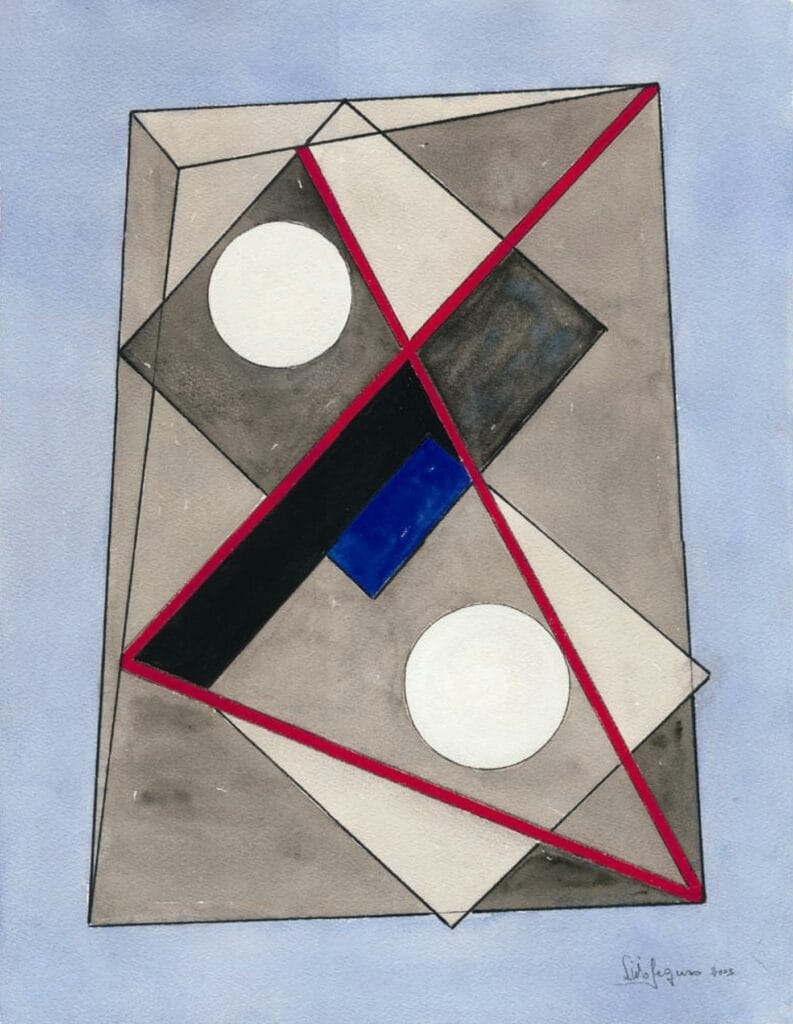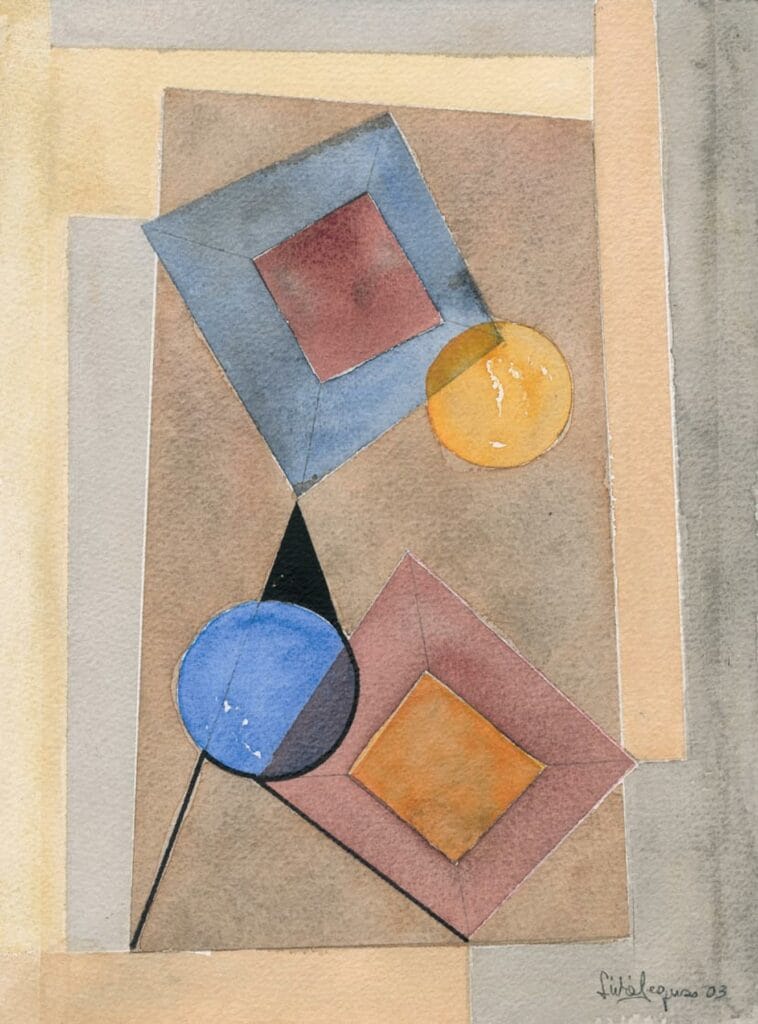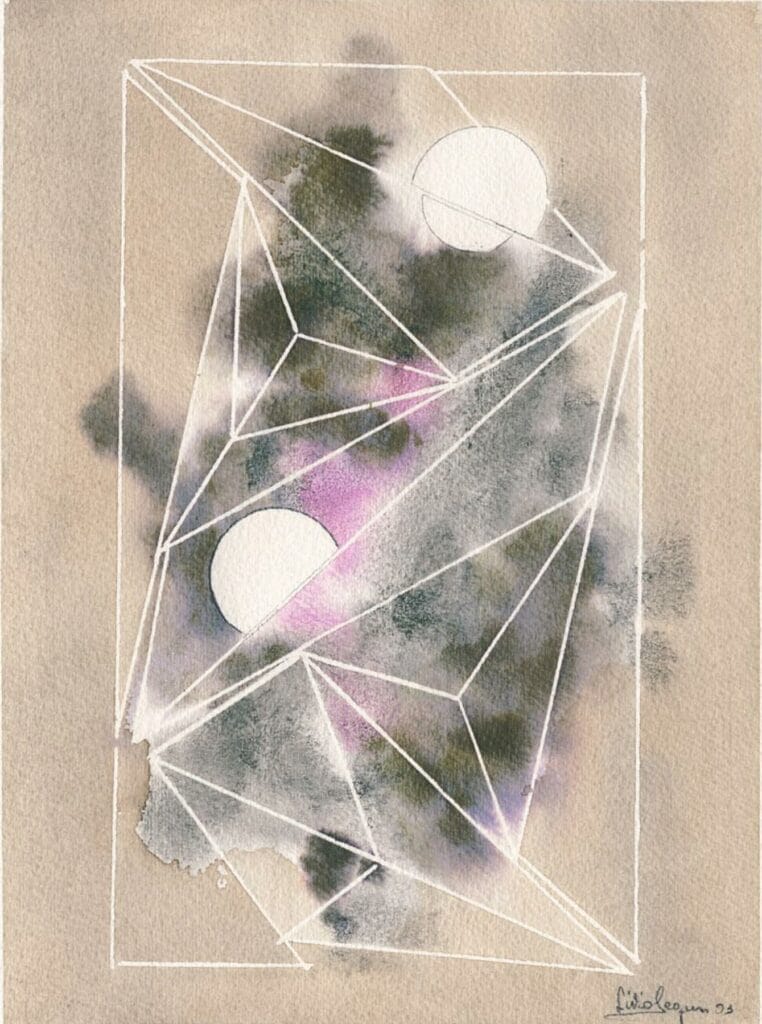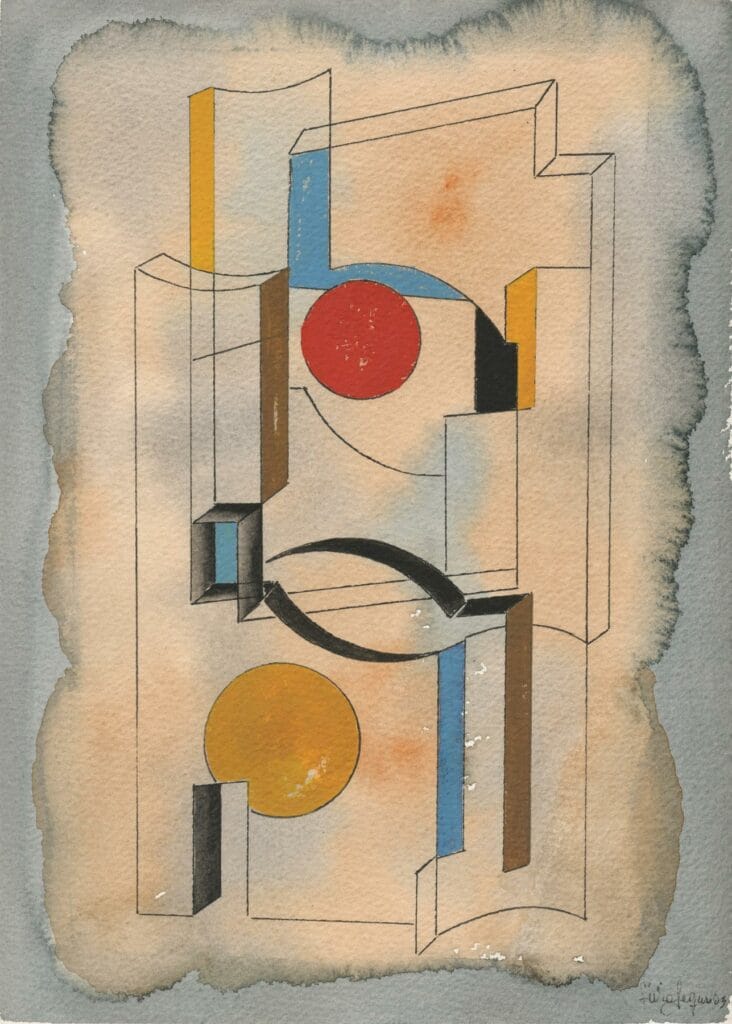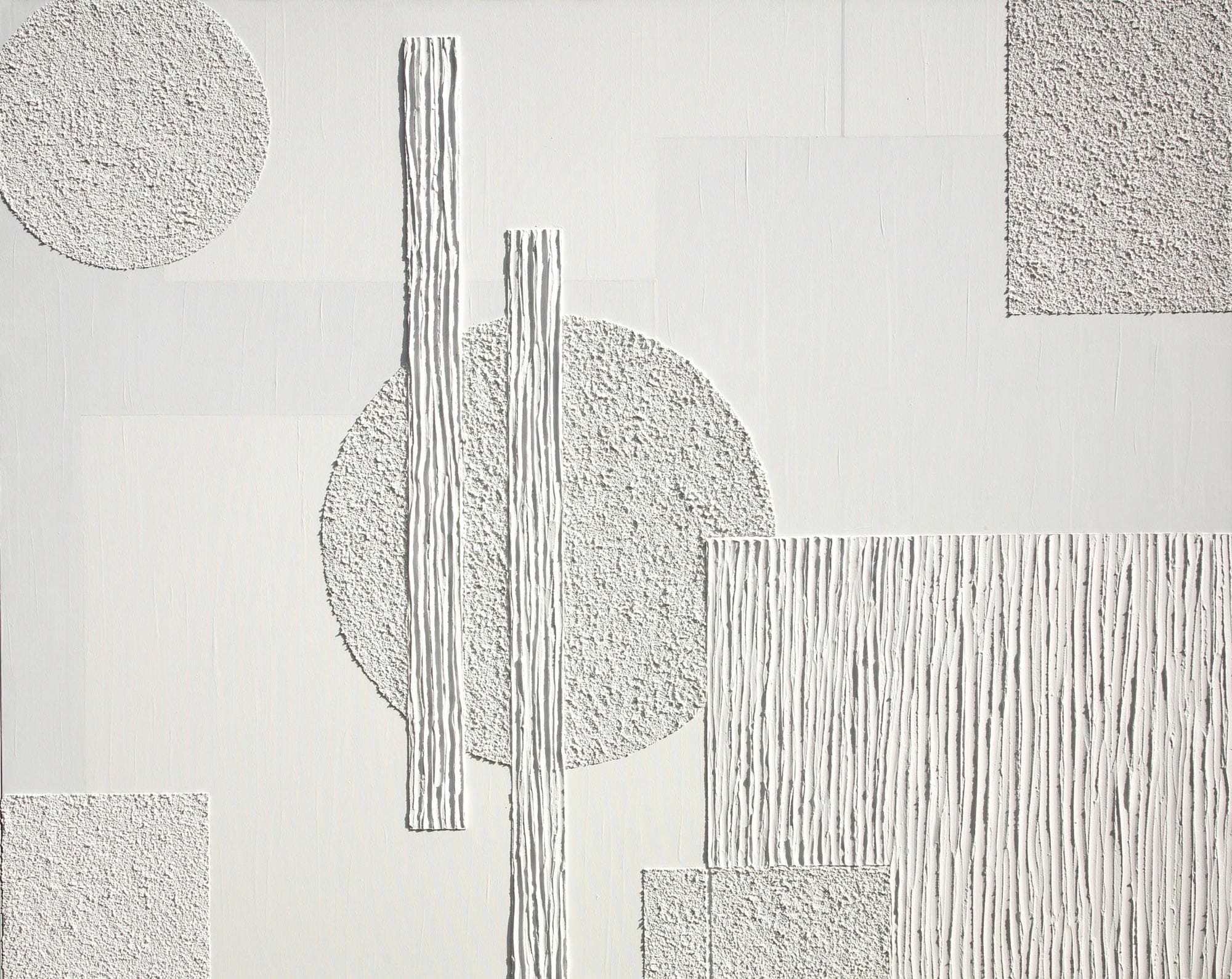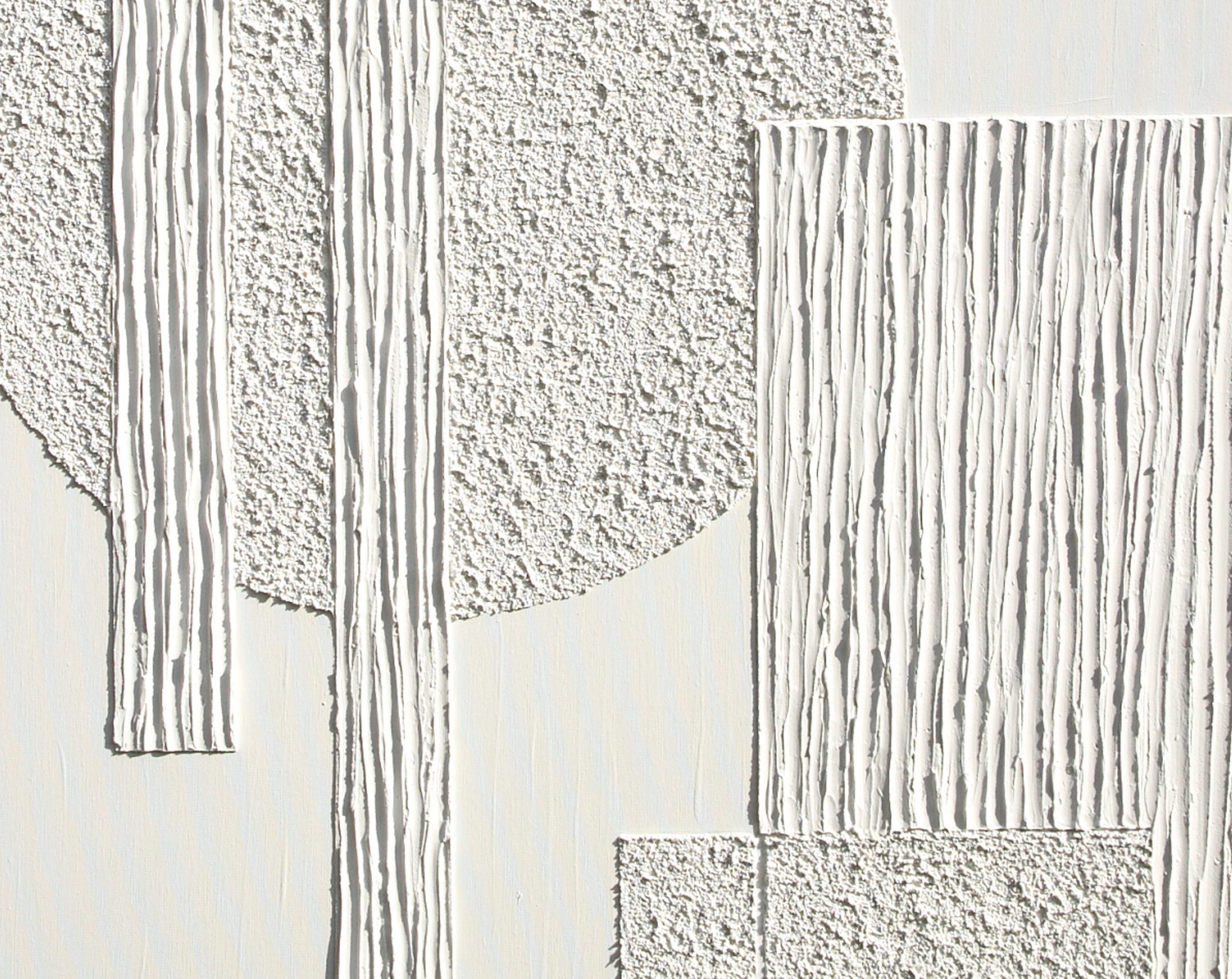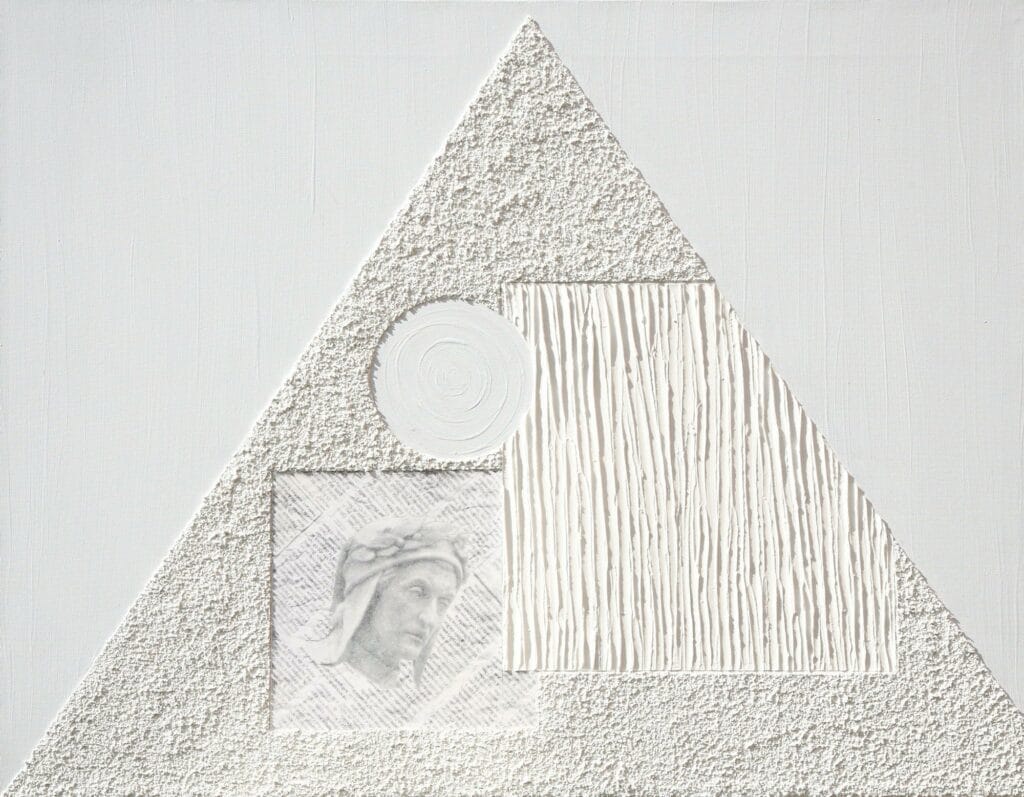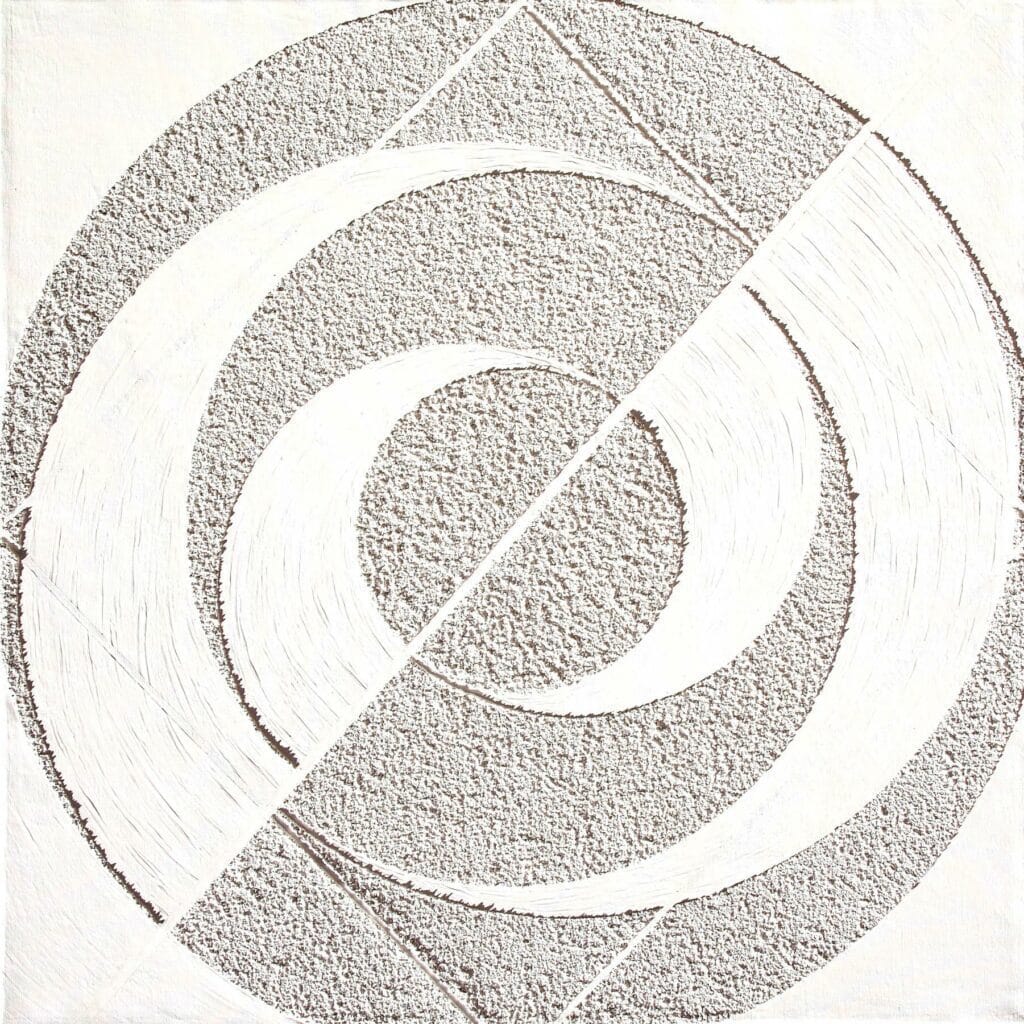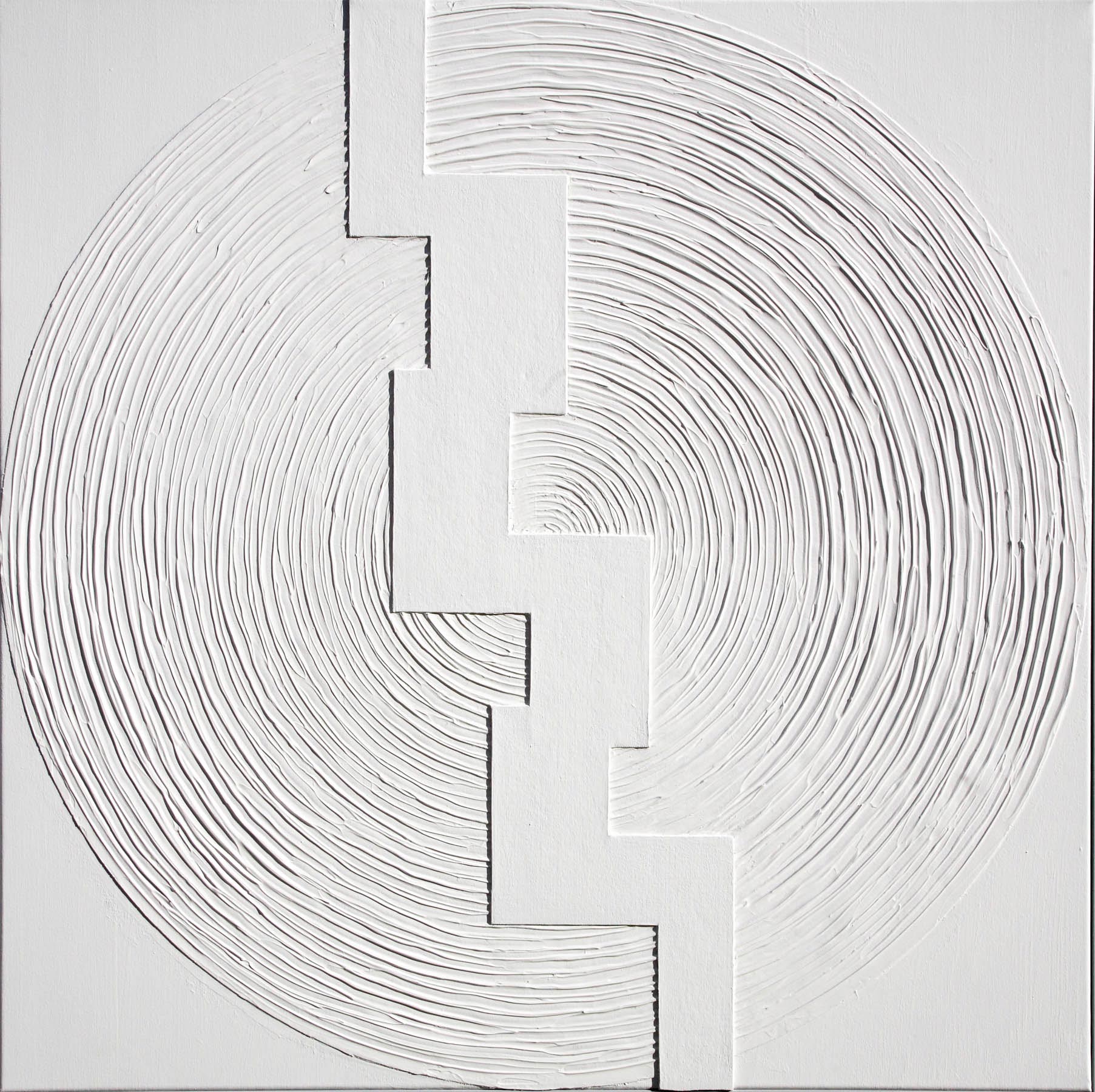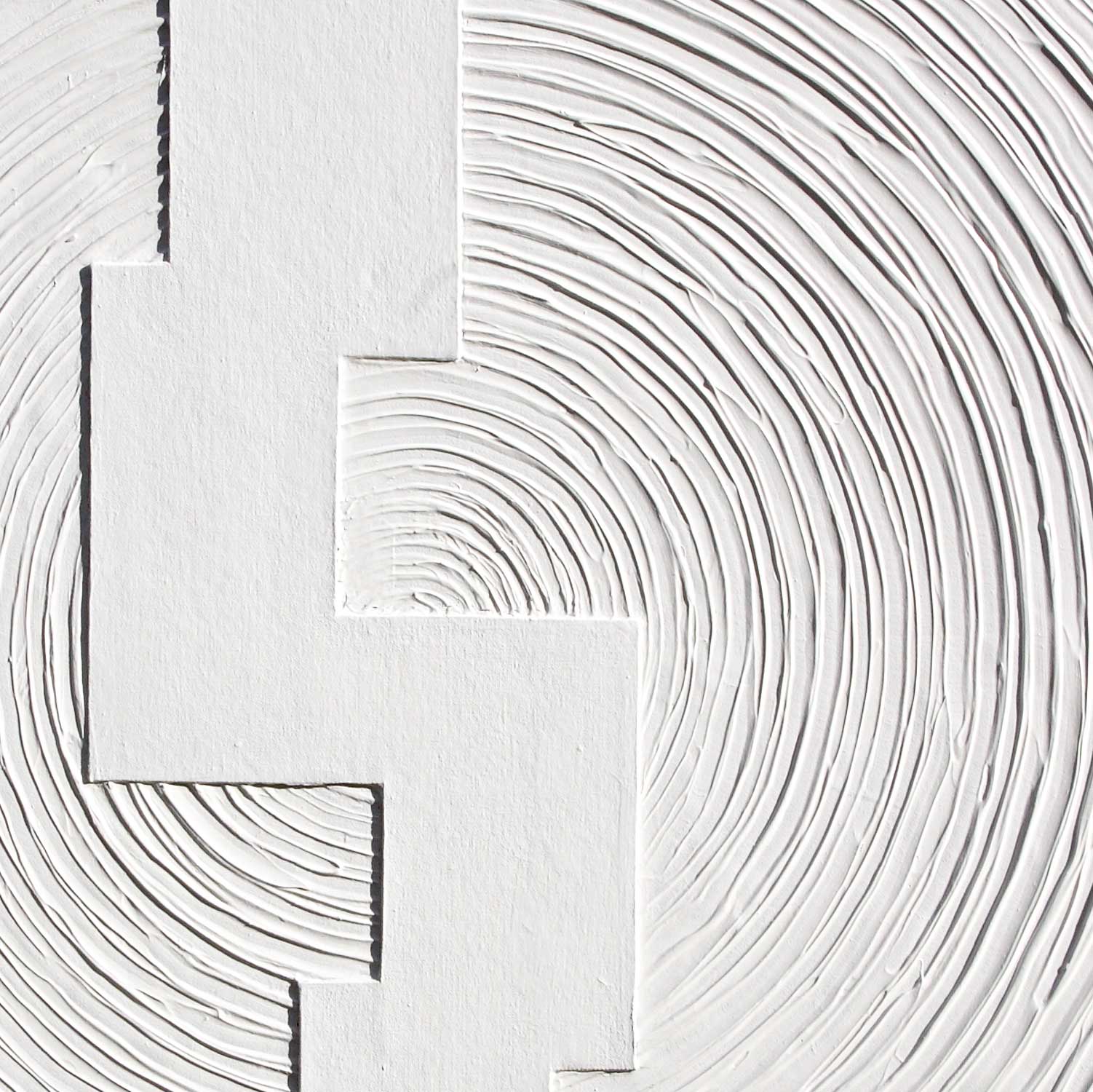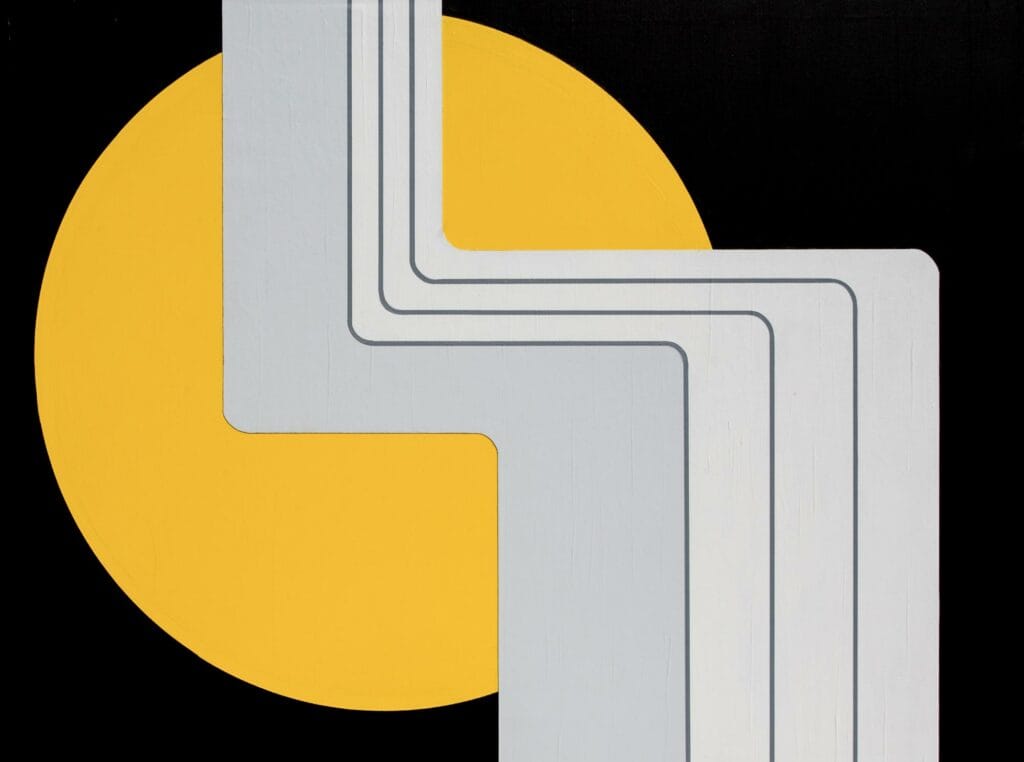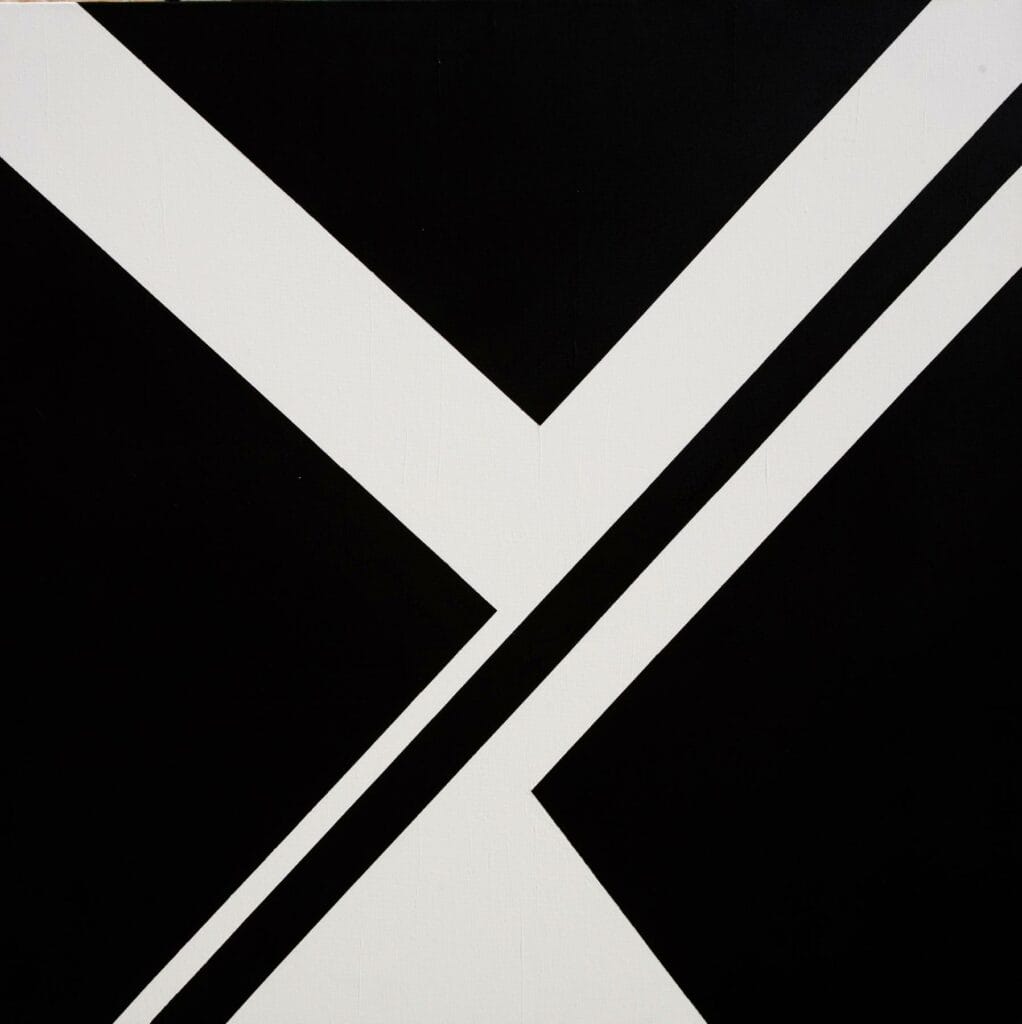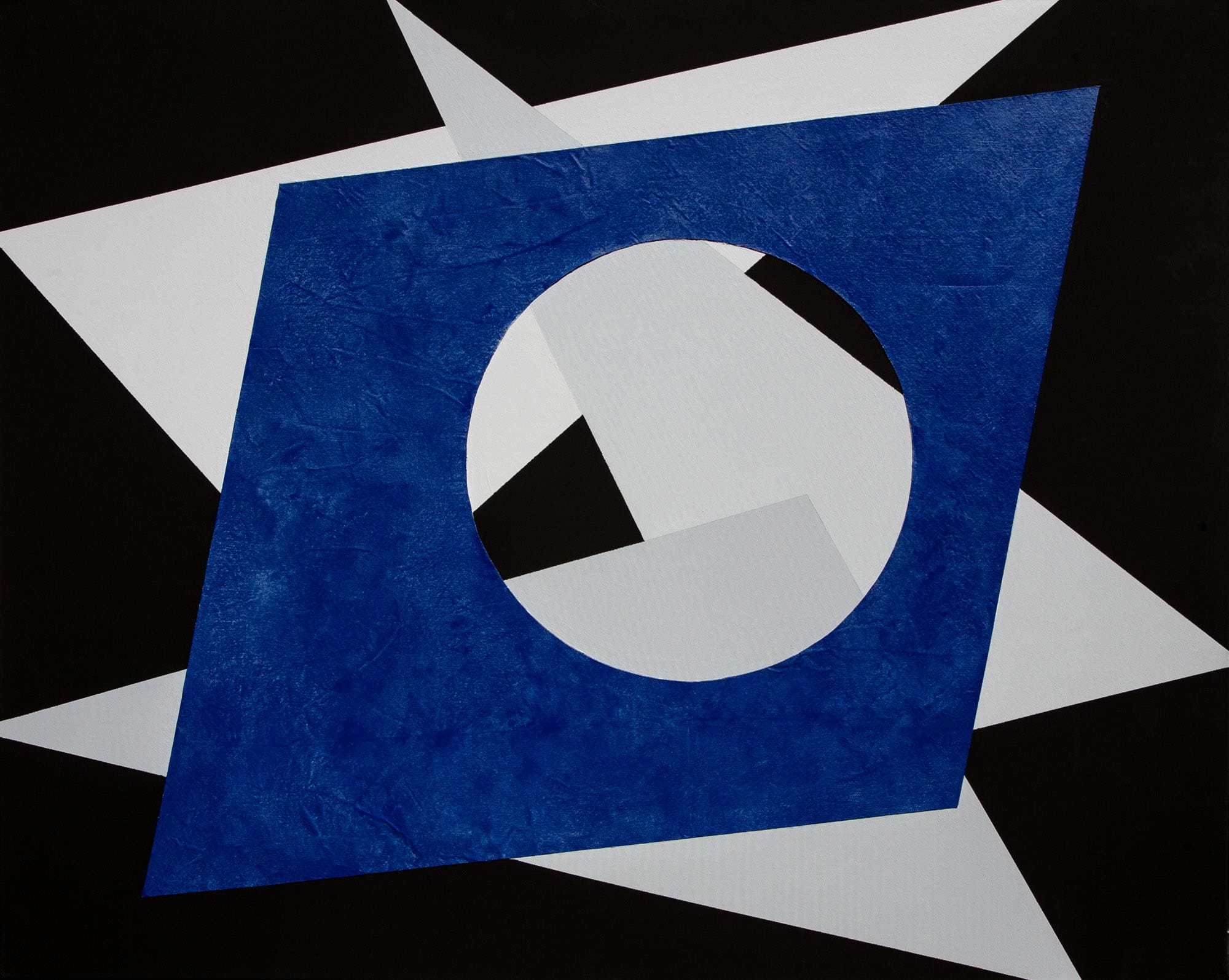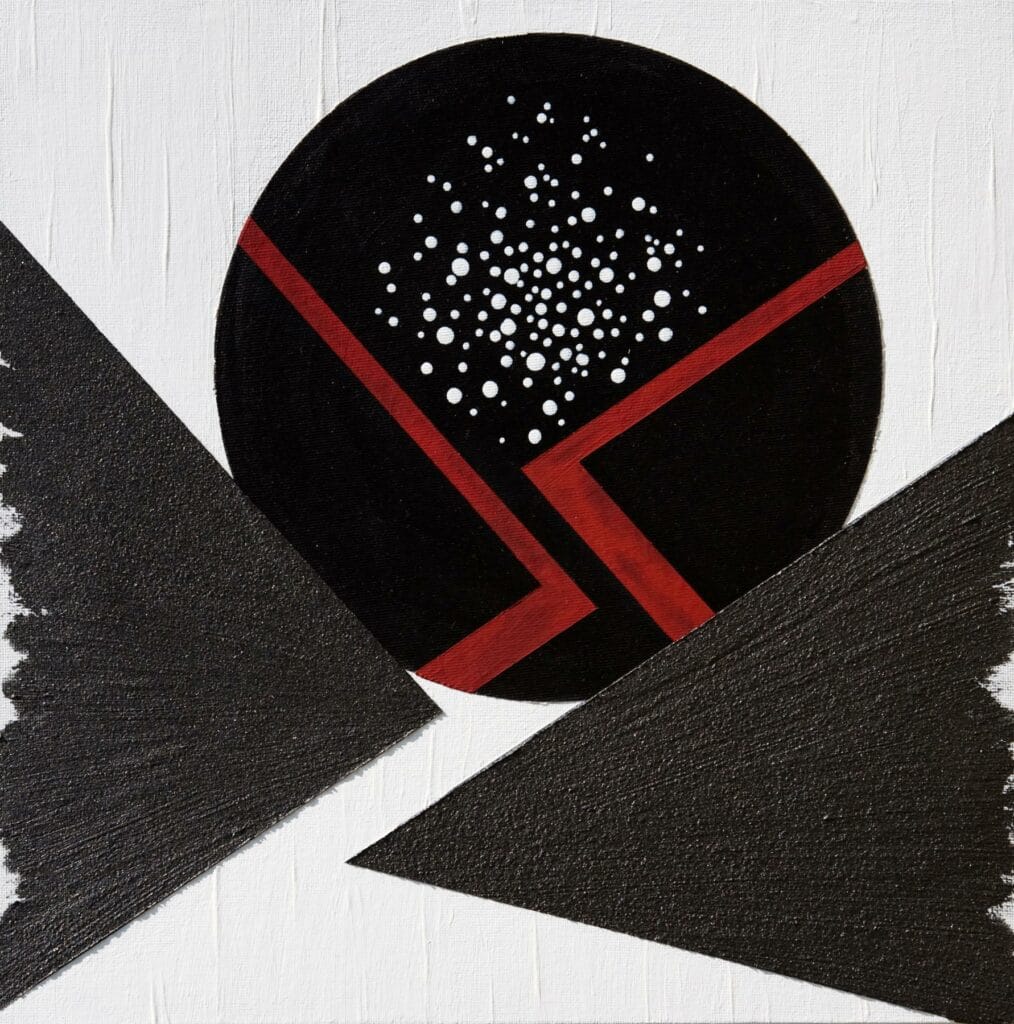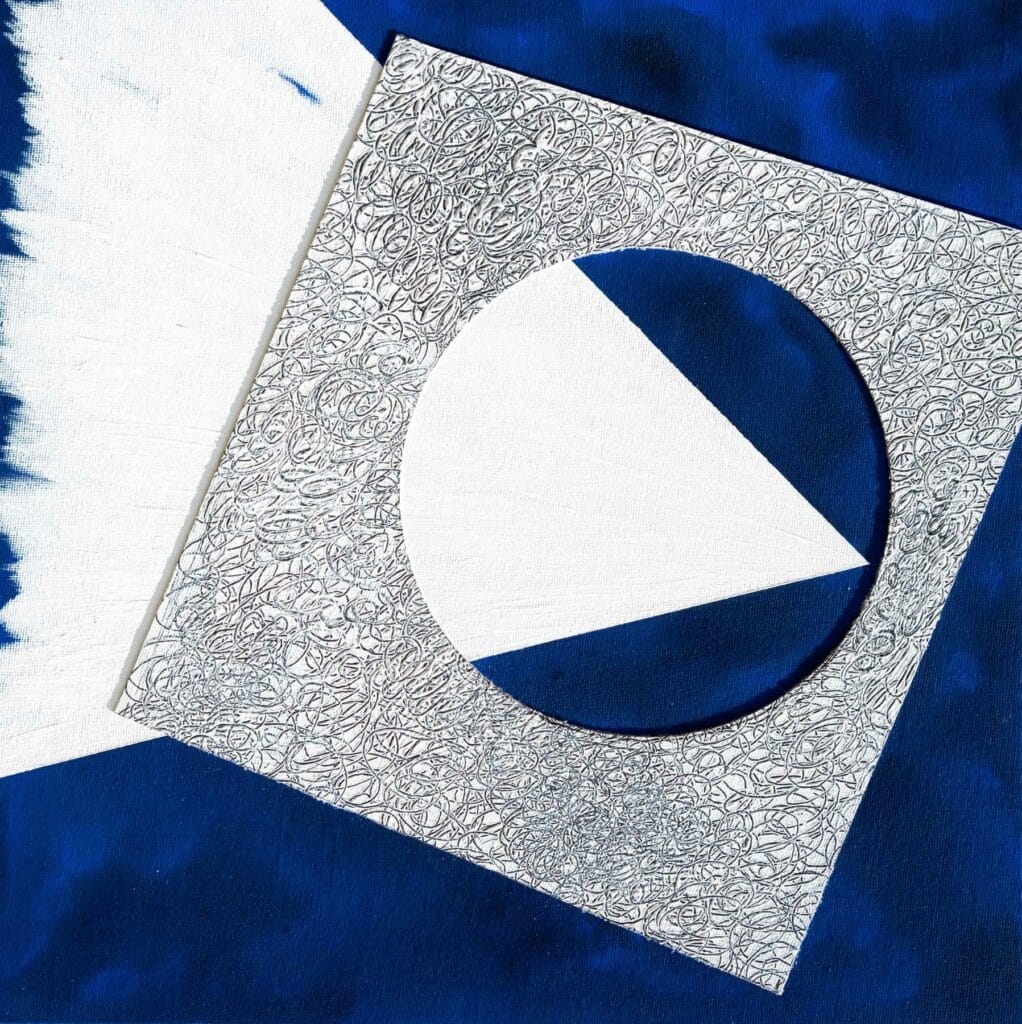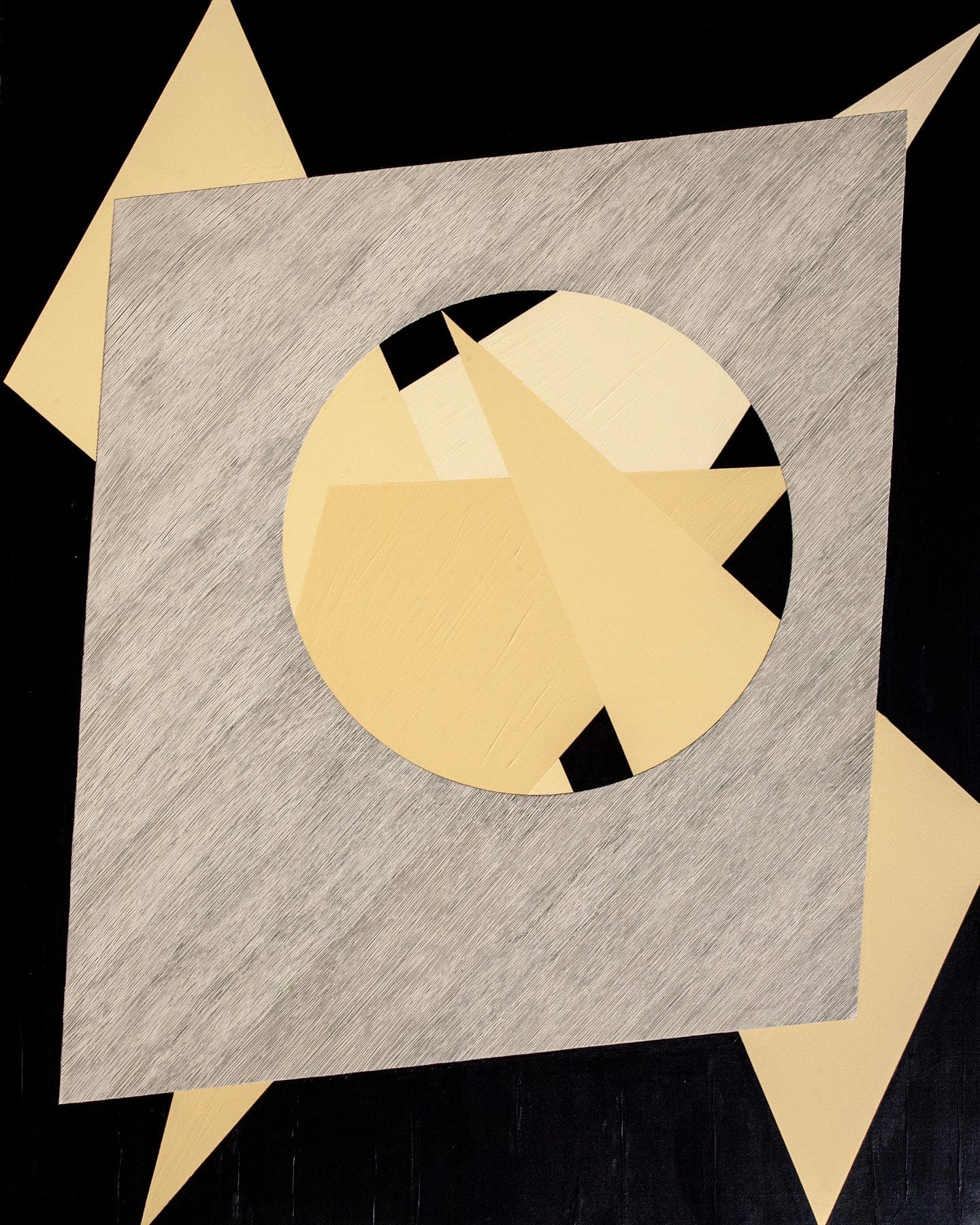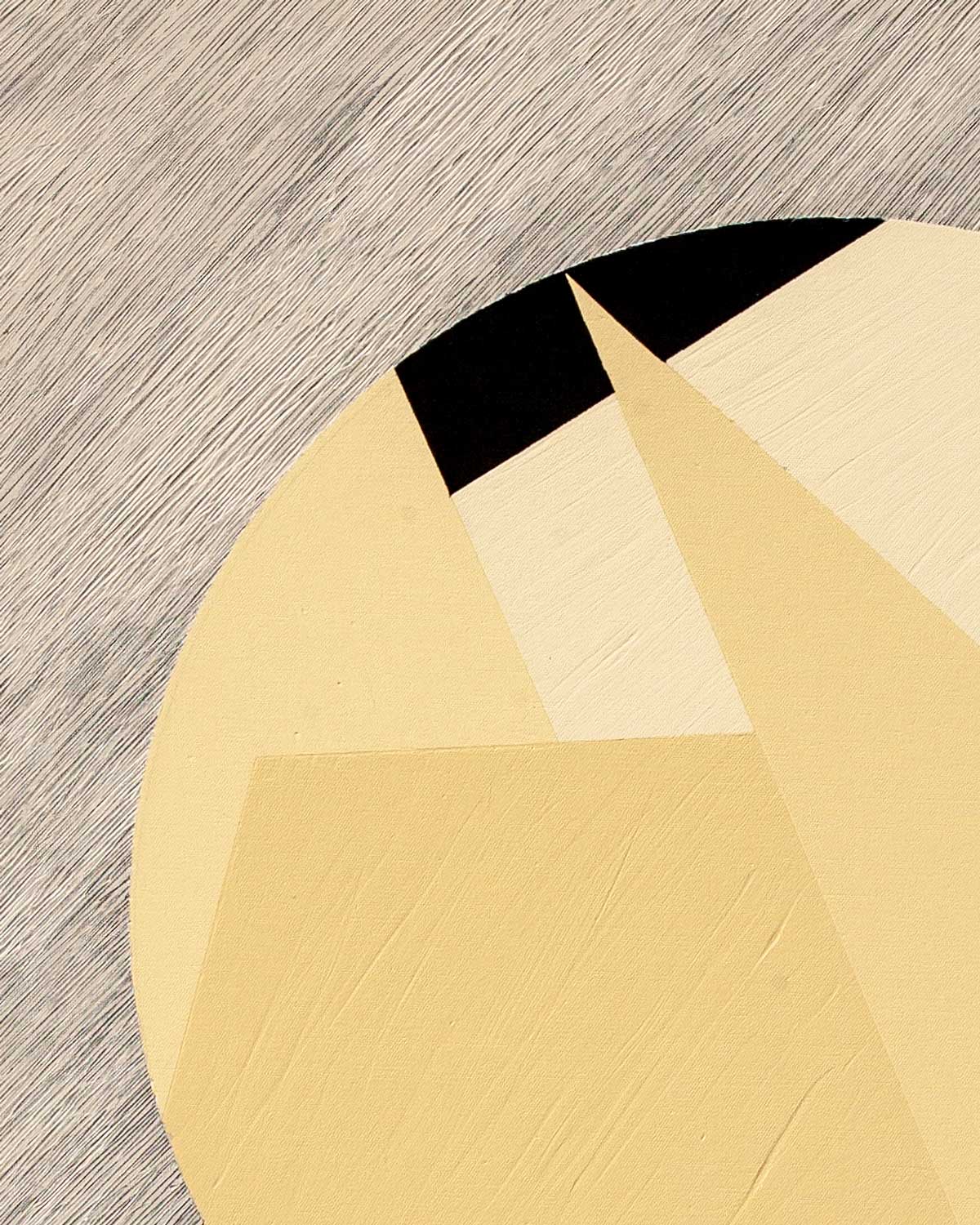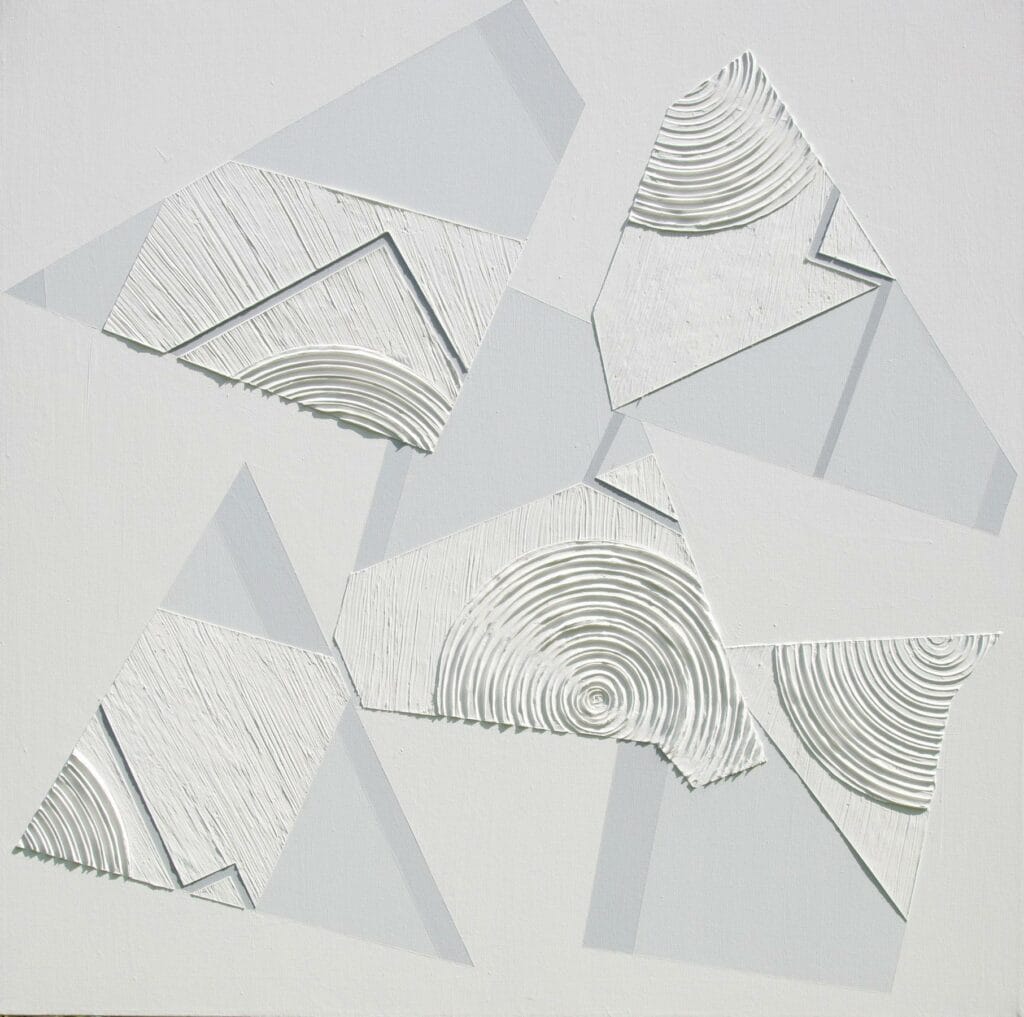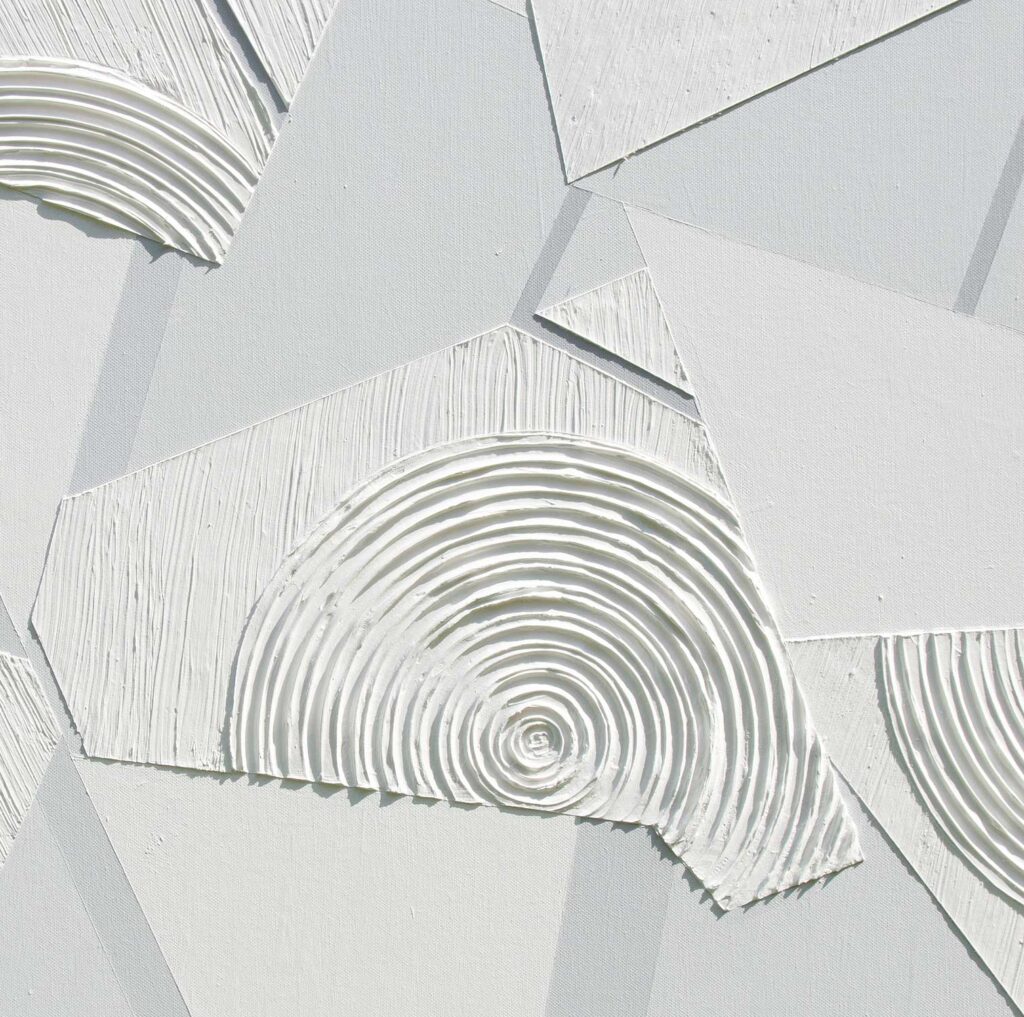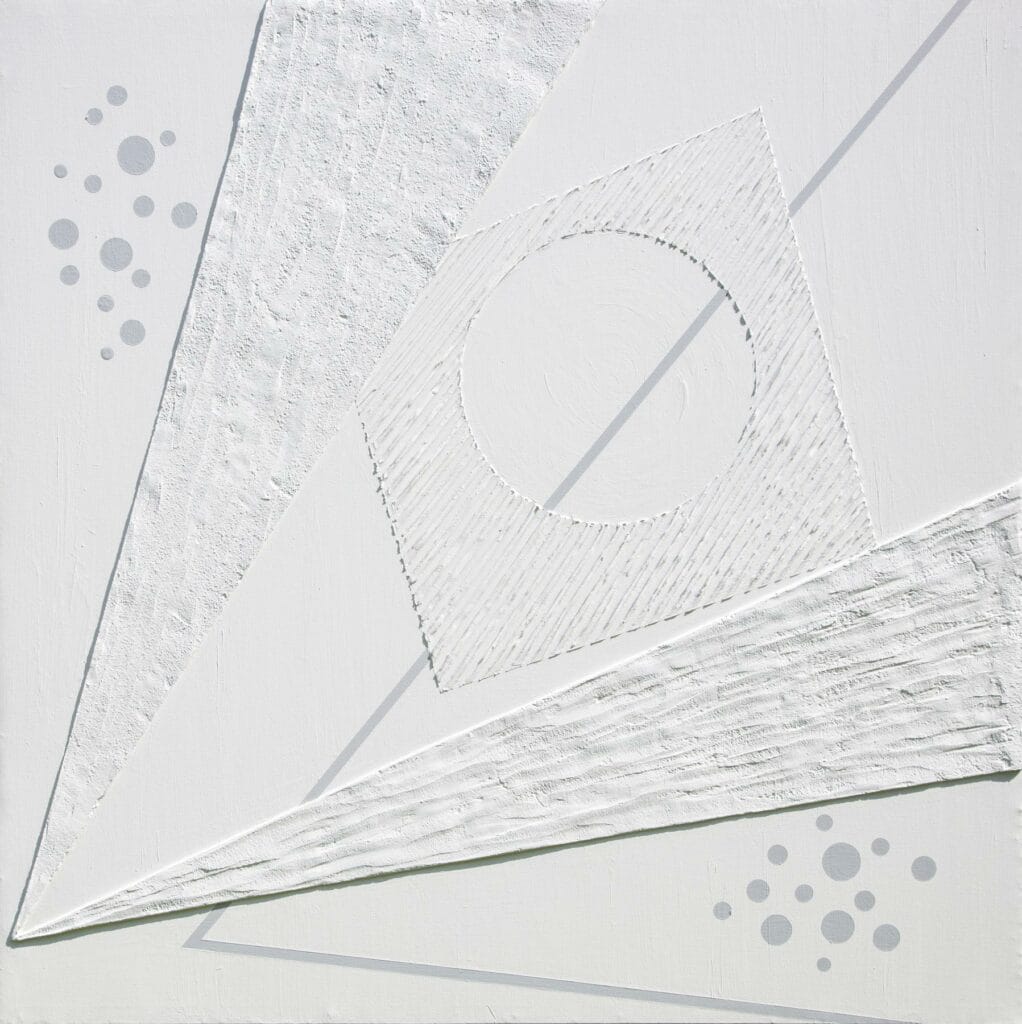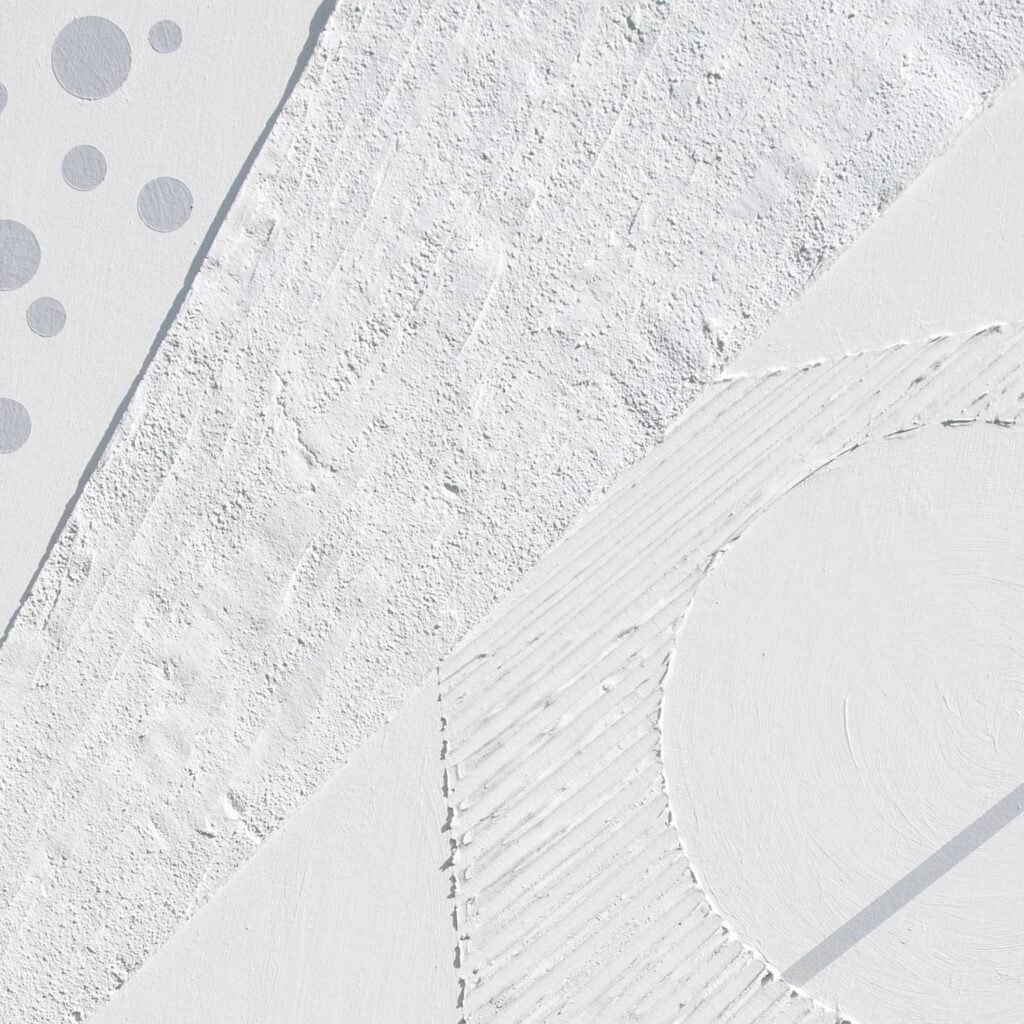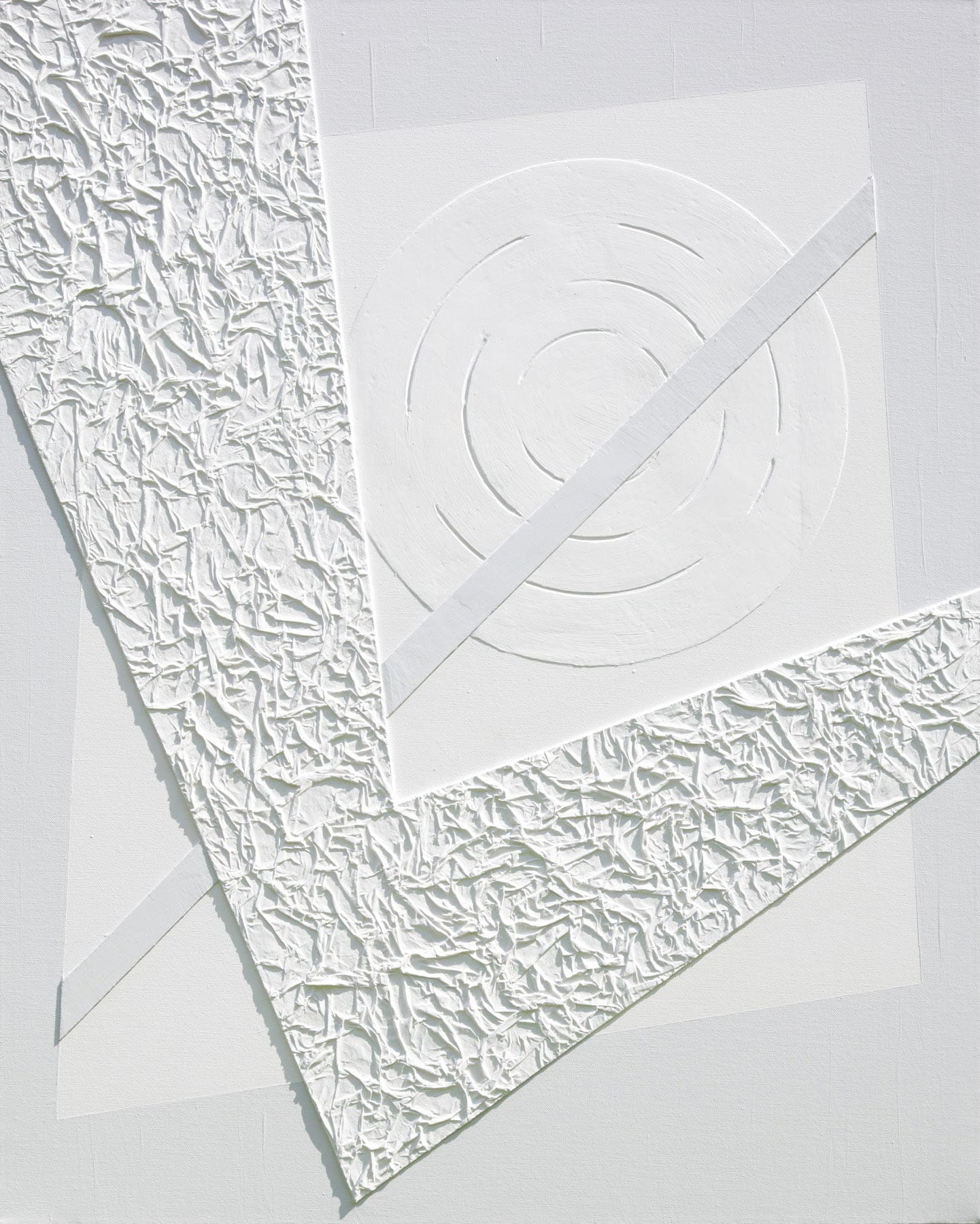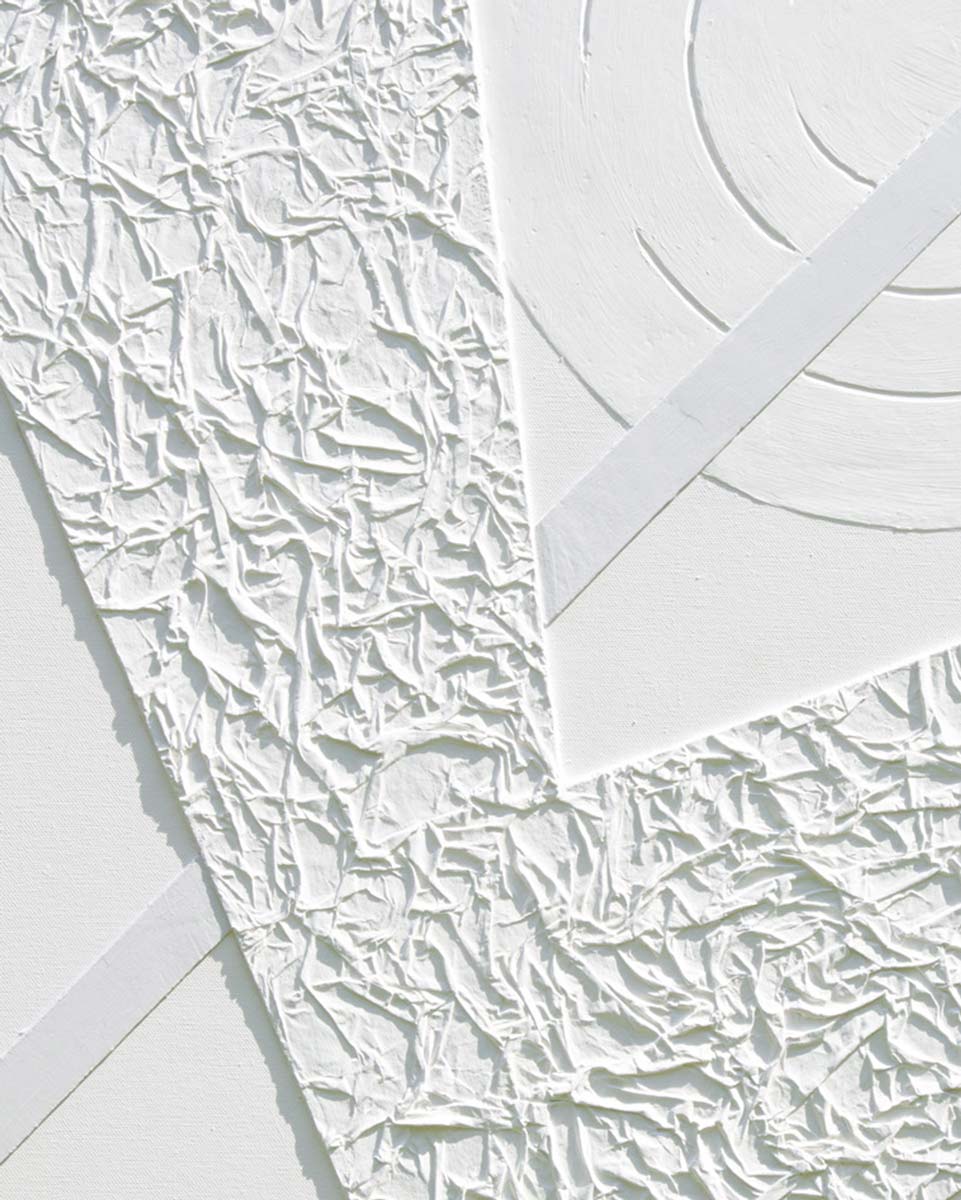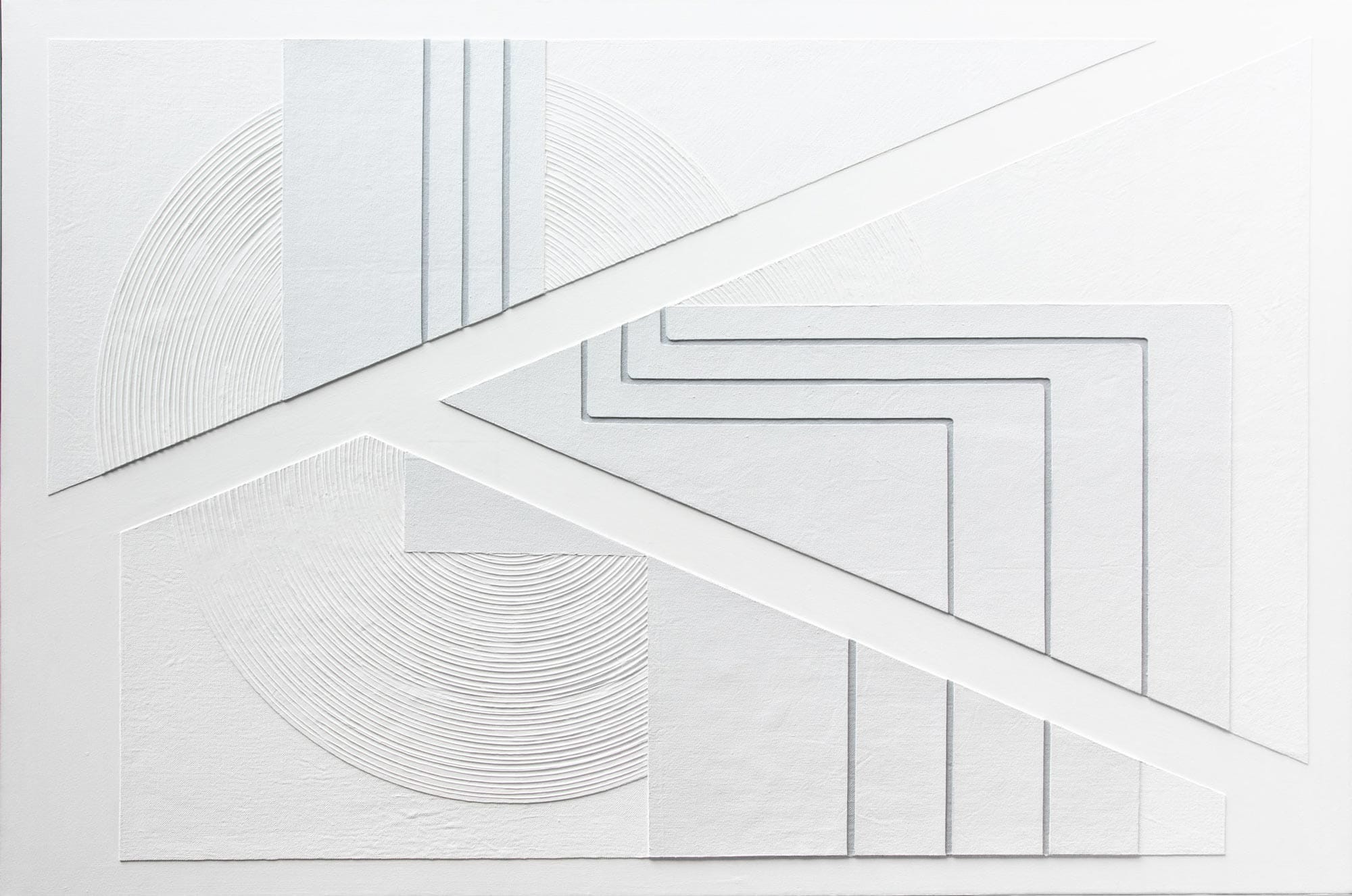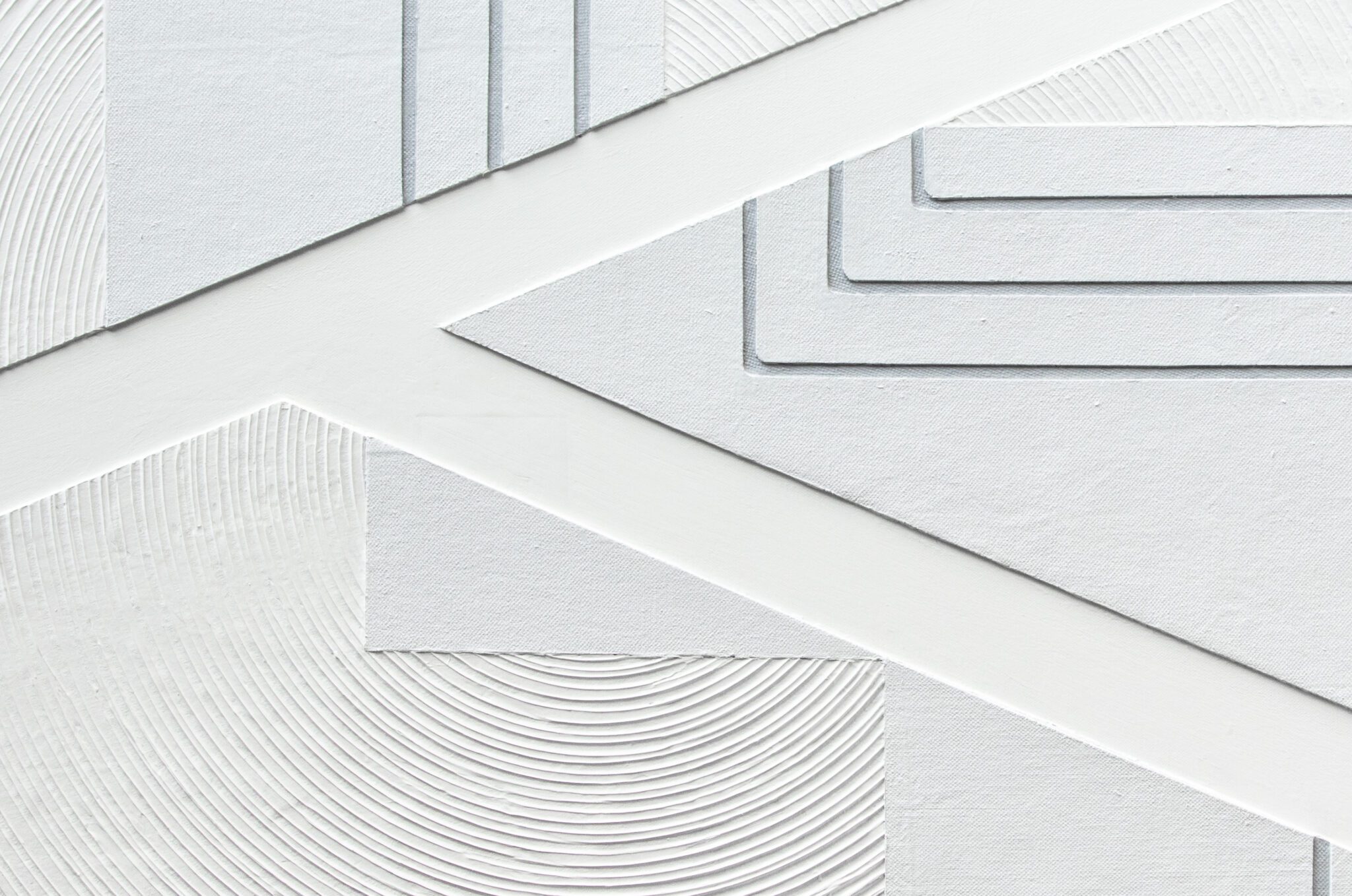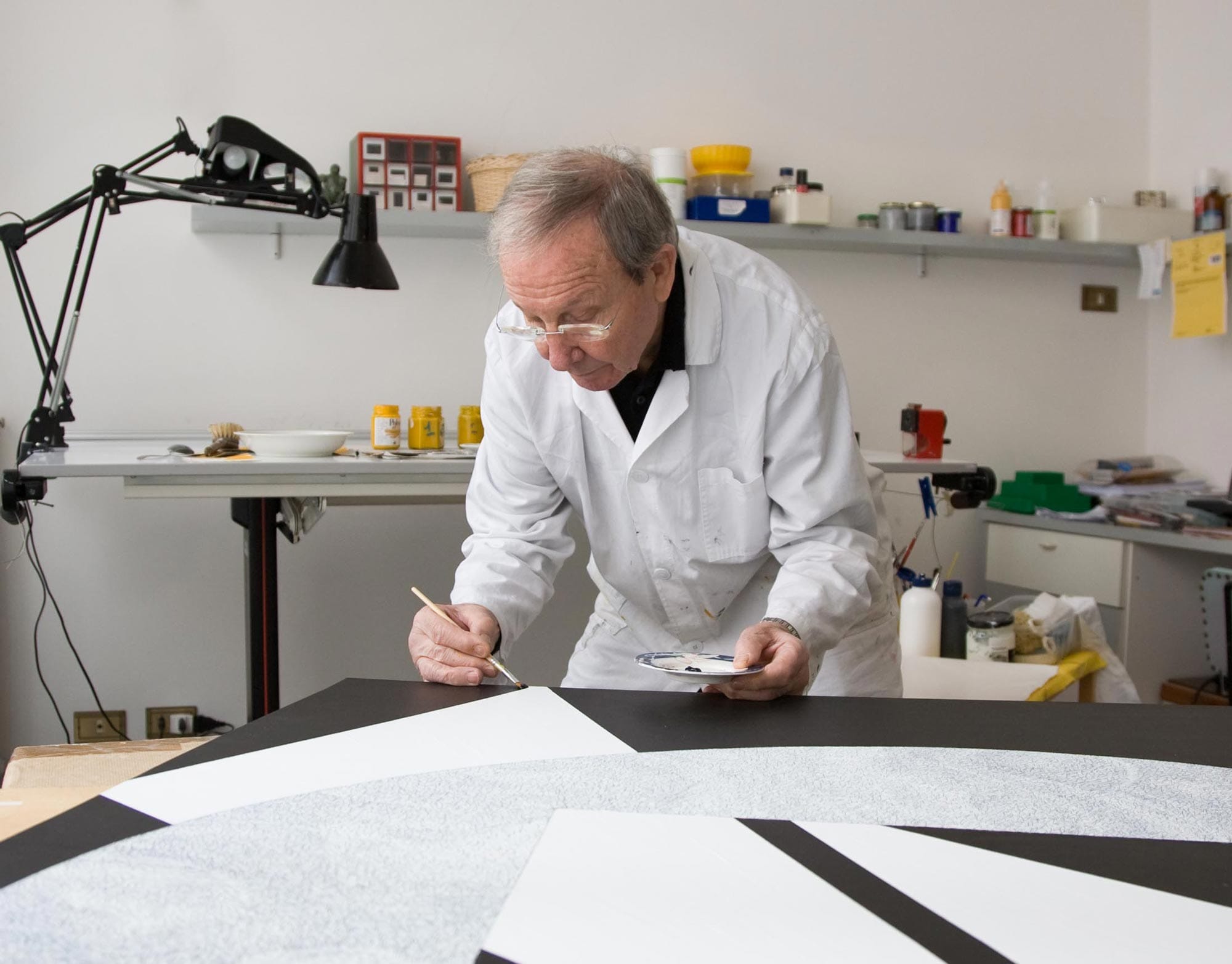Painting
As he matured, he also engaged in painting, which he continues to pursue. However, in this case, his works no longer serve a pure design function but exhibit a distinct compositional rigor and coherence of language, especially in the large-scale paintings where he revisits the concept of deconstruction previously expressed in sculpture. He captures his sensations on canvases through geometric patterns that emerge in his mind, resolving them with white on white and sometimes with bichromatic tones. He treats the compositions with material reliefs to enhance the structures that give strength to an unspoiled vision, where once again, light plays a primary role, symptomatic of his being an artist.
Rigore, 2003
Watercolor on paper, 59×45 cm
Private collection
Scomponimento, 2003
Watercolor on paper, 77×57 cm
Private collection
Visione onirica, 2003
Watercolor on paper, 76×56 cm
Private collection
Composizione poetica, 2003
Watercolor on paper, 31×23 cm
Pulsione emotiva, 2005
Collage and acrylic on canvas, 120×150 cm
Il Sommo, 2005
Acrylic on canvas, 70×90 cm
Tracciato concentrico 1, 2006
Acrylic on canvas, 100×100 cm
Private collection
Tema spaziale, 2006
Acrylic on canvas, 100×100 cm
Percorso armonico, 2006
Acrylic on canvas, 90×120 cm
Pulsione in bianco e nero, 2008
Acrylic on canvas, 80×80 cm
Sincronismo, 2009
Collage and acrylic on canvas, 120×150 cm
Private collection
Gioco ottico, 2009
Acrylic on canvas, 100×100 cm
Traduzione allusiva, 2009
Acrylic on canvas, 100×100 cm
Private collection
Coesistenza formale, 2009
Collage and acrylic on canvas, 150×120 cm
Disgregazione, 2013
Collage and acrylic on canvas, 100×100 cm
Divergenza, 2013
Acrylic on canvas, 100×100 cm
Dissonanza, 2015
Acrylic on canvas, 100×80 cm
Tracciato euritmico, 2018
Acrylic on canvas, 100×150 cm
…with a rigor that implies harmony and balance, Livio Seguso initially seeks a new and complete formal language to concentrate life and feeling and begins to think and intuit new form requirements through drawing. In creating the artwork, it is impossible to recognize volumes derived from objective reality individually. However, according to the artist’s aesthetic principles, they have been extracted from the world of observation: the curved line of the bridge’s shadow, the round face of the moon reflected in the water. Remodeled, they are put back together in a new order that is no longer naturalistic like the reality they originate from. Within the conflict of orientation, represented by the contrast of sharp, straight, and oblique lines, there are elements rich in the suggestion that acquire a new vitality. And his simple abstraction, stripped of secret lyricism, also gains a contemplative sensitivity.
Luigina Bortolatto, art critic, Treviso
